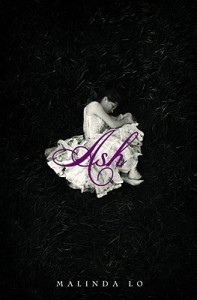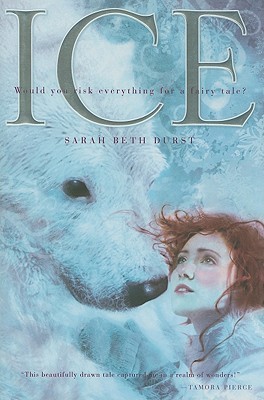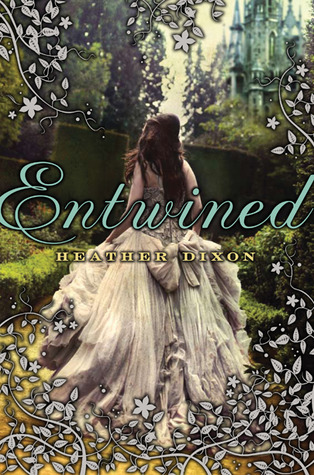Last week I touched on why fairy tales make for such good fodder for story ideas. And as promised, here are some of my favorite YA and MG novels that drew inspiration from fairy tales and myths (I’ve included myths here because they are also great sources of inspiration for similar reasons that fairy tales are…and I happen to have some great examples!) with quotes from the authors to give you even further insight into their ideas.
“A good fairy tale retelling taps into that sense of story-behind-story. It feels inevitable. You read it and you think, Yes, obviously, this is what happened. This is what it means. Writing a fairy tale retelling feels like discovery, not invention. Why did I combine Beauty and the Beast with Bluebeard? Because I was thinking about those stories one day and I realized, Beauty married the Beast in order to kill him. She’s afraid she will die like his previous wives. That’s what happened. How else could it be?” ~Rosamund Hodge (from an interview on Epic Reads)
ASH by Malinda Lo 
“Ash has gotten a lot of attention because it is a lesbian retelling of Cinderella. But my first draft had nothing gay about it–Ash, the main character, fell in love with the prince…. After I got some feedback from a friend, I realized that Ash was actually much more interested in one of the female characters, the huntress. That realization was startling to me; I had written all of that into the story without even consciously knowing it.” ~Malinda Lo (from an interview on Cynsations)
“My son Haley asked me to tell him some bedtime stories about the Greek gods and heroes…. I remembered a creative writing project I used to do with my sixth graders — I would let them create their own demigod hero, the son or daughter of any god they wanted, and have them describe a Greek-style quest for that hero. Off the top of my head, I made up Percy Jackson and told Haley all about his quest to recover Zeus’ lightning bolt in modern day America.” ~Rick Riordan (from the author’s website FAQ)
“Beauty and the Beast has been my favourite fairy-tale since I was about six; I still have the book I first read it in. When I wrote Beauty, I sat down, as I thought, to write a short story, and found I had more to say than I expected…. Beauty and the Beast is still my favourite fairy-tale…it was the only fairy-tale around that didn’t have the heroine waiting limply to be rescued by the hero…. I wrote Rose Daughter, as I say, in a six-month hurtle. And in hindsight I realize what fueled the hurtle, why, having tapped into a new lode of Beauty and the Beast in my mind and heart and bloodstream, the story shaped itself and shot out onto the page as it did.” ~Robin McKinley (from an essay on author’s website)
“I wrote [Ella Enchanted] because I love fairy tales and I’d just read Beauty by Robin McKinley, which I admired enormously…. I was starting a new writing class and needed an idea, so I thought maybe I could expand a fairy tale too. “Cinderella” is such an important tale, it’s the first one I thought of. But when I considered it, I realized I didn’t like Cinderella or understand her. She’s so disgustingly good! And why does she take orders from her horrible stepmother and stepsisters?” ~Gail Carson Levine (from the author’s website)
ICE by Sarah Beth Durst 
“I was initially inspired by a picture book of the Norwegian folktale “East of the Sun and West of the Moon” illustrated by P.J. Lynch. Specifically, there’s one illustration in there of the “lassie” where she has her hand on her hip and she’s wearing this you-won’t-stop-me expression. As soon as I saw that illustration, I knew I wanted to write about that kind of girl–a fearless girl who won’t be stopped.” ~Sarah Beth Durst (from an interview on YA Book Queen)
“[The Hunger Games is] very much based on the myth of Theseus and the Minotaur, which I read when I was eight years old. I was a huge fan of Greek and Roman mythology. As punishment for displeasing Crete, Athens periodically had to send seven youths and seven maidens to Crete, where they were thrown into the labyrinth and devoured by the Minotaur, which is a monster that’s half man and half bull. Even when I was a little kid, the story took my breath away, because it was so cruel, and Crete was so ruthless.” ~Suzanne Collins (from an interview with the School Library Journal)
“Quest of the Hart…the first book in the Princess of Valendria series, is a reverse Sleeping Beauty. This story all started when a friend suggested I write a book where the girly-girl saves the guy. While thinking about how to adapt this idea, I kept thinking of the princess in the tower needing rescue, and Sleeping Beauty popped into my mind. I pulled out my DVD, sat down with pen and paper, and jotted down the sequence of how things happened in the Disney version. Armed with a plan, I started working on my own version, and Quest of the Hart was born.” ~Mary Waibel (from an email from the author)
CINDER by Marissa Meyer 
“I entered a writing contest [and chose two prompts]: Set the story in the future and include a fairy-tale character. My contest entry was a sci-fi version of “Puss in Boots” and I had so much fun writing it that I thought I would try to do an entire series of science-fiction fairy tales!… So I started to brainstorm what futuristic twists I could give to some of my favorite fairy tales. A couple months later I was drifting off to sleep when the lightning bolt struck: Cinderella… as a cyborg! My head instantly filled with all sorts of ideas and I had to crawl out of bed and start taking notes.” ~Marissa Meyer (from the author’s website FAQ)
ENTWINED by Heather Dixon 
“I’ve always loved the Twelve Dancing Princesses. I remember looking through page after page of a beautifully illustrated storybook when I was a kid, and just wishing I could live in their world. So, the visual element just really stuck for me.
Okay, now it’s your turn to share your favorite retellings (and feel free to branch out from books and include other media)!

#InkRipples is a monthly meme created by Katie L. Carroll, Mary Waibel, and Kai Strand. We pick a topic (May is about fairy tales), drop a ripple in the inkwell (i.e. write about it on our blogs), and see where the conversation goes. We’d love to have you join in the conversation on your own blogs or on your social media page. Full details and each month’s topic can be found on my #InkRipples page.

































